- Home |
- Why With Us |
- About Us |
- Booking |
- Contact Us |
- Site Map


Everest Base Camp Trek
14 days (ktm-ktm) Days from
This is a short trek to the Base of Everest along with the opportunity to ascent Kala Patthar for views of surrounding peaks including the Mt. Everest (8848m), Nuptse (7855m), Lhotse (8516m), Mt. Pumori (7,161 m), and Mt. Lingtren (6714m) and many others. Many trekkers to the Everest Base Camp naturally wish to attempt to summit Kala Patthar, since it provides the most accessible point to view Mt. Everest and other surrounding peaks which cannot be seen from the base camp itself. The views from almost anywhere on Kala Patthar of Everest, Lhotse and Nuptse are simply spectacular.
| Max. Elevation : 5545m | Grade : Strenuous |
| Best season : Oct-Dec & Feb-May | Type of trek : Tea house/Lodging |
| Duration : 14 Days | Starting point : Lukla |
| Ending point : Kathmandu | Highlights : Nature |
This is a short trek to the Base of Everest along with the opportunity to ascent Kala Patthar for views of surrounding peaks including the Mt. Everest (8848m), Nuptse (7855m), Lhotse (8516m), Mt. Pumori (7,161 m), and Mt. Lingtren (6714m) and many others. Many trekkers to the Everest Base Camp naturally wish to attempt to summit Kala Patthar, since it provides the most accessible point to view Mt. Everest and other surrounding peaks which cannot be seen from the base camp itself. The views from almost anywhere on Kala Patthar of Everest, Lhotse and Nuptse are simply spectacular.
Following a 35 min flight to Lukla from Kathmandu and after the brief orientation we trek gently to the riverside village of Phakding where we overnight during our first leg of the trek. From Phakding we head up to the Sherpa capital of Namche Bazaar where we will have a full day of rest or short hike to Kunde or Khumjung to help us acclimatized properly.
From Namche we continue to Tenboche, Pheriche, Lobuche and finally to Gorekhshep – the jumping off point for the climb up to Kala Patthar (5545m) for spectacular views of Mt. Everest and other surrounding peaks followed by a walk to the Base Camp.
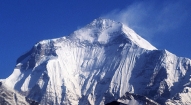
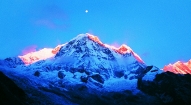
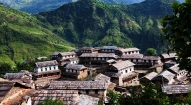
Day 01: Arrive Kathmandu International Airport- T I A (1300m) and transfer to hotel.
Day 02: After breakfast we set out for an extensive guided sightseeing tour of Kathmandu valley’s cultural, historical, religious and (world heritage) sites. During the course, we visit the famous Pashupatinath temple of Lord Shiva situated at the holy bank of River Bagmati where we will also observe the Hindu cremation ritual. We then proceed to the Boudhanath stupa, a major pilgrimage centre for the Buddhist faith which also is the largest of its kind in the world. We then have a short break for lunch followed by a visit to Swoyambhunath stupa also known as the Monkey Temple from where we can have a bird’s eye view of whole of Kathmandu valley. Following this we then proceed for a visit to Kathmandu Durbar Square, the oldest royal palace of Kathmandu and a UNESCO world heritage site. The whole are of Kathmandu Durbar Square is dotted with numerous fascinating Nepalese architect dating back many centuries. The site is also the home to Nepal’s living Goddess – Kumari, where we will also have the opportunity to experience firsthand this unique Nepali tradition. In the evening we will attend the welcome dinner hosted by Makalu Adventure with live Nepalese culture shows.
Day 03: Kathmandu ( 1310m) - Lukla (2827m) - Phakding (2652m) 5 hours
After a very early start, and an early take off from Kathmandu domestic airport, a 45 minute flight is all it takes to propel us into the Everest region of Nepal. The landing at Lukla (2800m) is spectacular and on arrival we are greeted by our sirdar and trekking crew who organise the luggage and hustle us off for tea. After a leisurely lunch we start the trek in earnest, setting off for a gentle walk to Phakding (2800m), a further 3 hours to the north. The trail leads through Lukla, past hotels, shops and airline offices to the edge of the Lukla plateau where the trail drops to meet the intersection of the Jiri trail at Chablung. From here the trail follows the Dudh Kosi north through the village of Ghat and then finally to Phakding where we spend the night.
Day 04: Phakding - Namche Bazar (3440m) 7 hours
From Phakding it is a steep ascent to Namche Bazaar a prosperous market town and the administrative center for the Khumbu region. In Namche, one will often see Khampa Tibetans who have crossed over from Chinese occupied Tibet to trade with the Sherpa of the Khumbu. At Jorsale the trail enters Sagarmatha Nat'l Park. Visit the National Park museum situated on a hilltop above Namche. With good weather we will be rewarded with views of Everest, Nuptse and Lhotse.
Day 05: Namche Bazar –Acclimatization
Today we have a full day rest at Namche for us to acclimatize to the altitude. Or alternatively, we could go for a short warm up hike to Khumjung and Kunde. Early on our second day in Namche, we will visit the Sagarmatha National Park where we will have our first views of Mt. Everest, Lhotse and Amadablam. After lunch we hike up to Khumjung to see the famous Yeti skull and the gompa followed by a visit to Khunde to see the Hilary hospital and return to Namche for the night.
Day 06: Namche – Thyangboche (3875m) 6 hours:
From Namche, we climb towards the park headquarters and follow a contouring trail high above the Dudh Kosi River. Above Namche the route to Thyangboche becomes visible with the monastery seen below the summit of Everest and surrounded by Himalayan peaks. On today's walk there are opportunities to spot the local wildlife, including the beautiful Danphe Pheasant often seen among the birch and silver fir forest between Shanasa and Trashinga, and Himalayan Thar on the high ground above the trail. After reaching the re-forestation nursery at Trashinga, the trail drops steeply to cross the Dudh Kosi at Phunkitenga (3250m), where we take lunch. In the afternoon we pass water-driven prayer wheels and ascend, initially steeply, through pine, fir, black juniper and rhododendron forest towards Thyangboche. The monastery and our lodge are located in a beautiful meadow surrounded by towering Himalayan peaks in a truly peaceful and tranquil setting. The most notable peaks seen from here are Kantega, Ama Dablam - perhaps the most beautiful peak in the region - and of course Mount Everest.
Day 07: Thyangboche -Pheriche (4250m) or Dingboche (4300m):5 hours:
After an early breakfast, we tour the largest and most important Thyangboche monastery. We then begin our hike following the Imja Khola (River) towards Pangboche from where a short hike takes us to the small village of Pheriche. It is advisable to spend two nights at Phriche or perhaps more comfortable at Dingboche to add acclimatization. On the next stage of the trek to Lobuche we will be less likely to suffer altitude sickness if we do so. Phiriche is a notoriously cold and windy place, but its outlook along the Khumbu valley is very impressive. The village consists of an expanding group of lodges, houses and an important health post manned in the main trekking season by western volunteer doctors, and supported by the Himalayan Rescue Association. Compare to Phiriche, Dingboche is a warmer place to stay in overnight but we have the options of choosing either as the distance between either is very short.
Day 08: Dingboche: Acclimization:
Today we spend an acclimatization day by climbing a spectacular point of rock above Dingbohe. For most people, this will be the highest they have been up to this point. There are close up views of Mt. Taweche and Amadablam. In the distance one can also see Island peak and Mt. Makalu – one of the fourteen 8000 meter peaks on earth of which Everest and Lhotse are the members
Day 09: Dingboche: Lobuche ( 4930m):
The trail to Lobuche remains on the east side of the Khumbu Khola, although there may well be several minor streams to cross as we approach the Kharka (summer pasture), form where Tabuche and Cholatse look impressive with an inspring view down valley towards Amadablam finally arriving at Lobuche backed by yet more moraines. It can be very cold in Lobuche and we will need a good down jacket and sleeping bag to get through a night in comfort. Once the sun has left the valley temperature plunge way below freezing. However, the lodges can be eye-wateringly warm though, speciall when a yak dung stove belches acrid smoke into the room we are sleeping in. The alpenglow on Nuptse can thrilling when viewed from Lobuche, but for a wider panorama, we should try climbing onto the ridge immediately behind the lodges.
Day 10: Lobuche – EBC – Gorakshep (5184m):
Today we will have an early start for our trek to the base camp. After about two hours walk from lobuche we reach Gorakshep and another one hour’s walk will take us to the base camp. Departing the lodge at Lobuche, we cross the stream below and wander into the ablation valley curving leftwards. The path stays on the left hand side of the valley, beside the unseen Khumbu glacier, and then enters a higher, narrower step. On reaching a narrow side valley which cuts off to the left, a sign directs the route ahead “Way to Gorekshep”.
Day 11: Gorakshep – Kalapatthar (5545m) – Pengboche (3930m)
Today we have an early morning start for ascent to Kalapatthar. Hike up an increasingly rough and steep trail through to Gorak Shep. Pass the small and often frozen lake, and continue upward to Kala Pattar . Catch your breath at the top and survey one of the most magnificent mountain panoramas in the world: the south and west faces of Mount Everest and its entourage of neighboring peaks Lhotse and Nuptse. Following this we start retracing our step back towards Pangboche.
Day 12: Pengboche – Khumjung (3790m):
After visiting the Gompa at Pengboche we hike to Khumjung through Phorste
Day 13: Khumjung - Monjo (2835m)
Day 14: Monjo – Lukla
Day 15: Lukla – Kathmandu
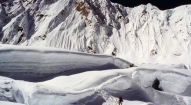
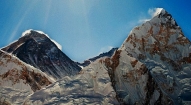
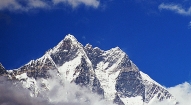
- All airport/hotel transfers.
- All accommodation in Kathmandu and during the trek.
- Welcome and farewell dinner.
- All domestic flight (as and wherever stated)
- Trek leader, assistant trek leader) Sherpa porters- including their salary, insurance, equipment, flight, food and lodging
- Down jacket, sleeping bags, Trekking kit bag/duffel bag, trekking map and trekking Poles
- All necessary paper work and permits (National park permit or entrance fees etc)
- A comprehensive medical kit
- All government and local taxes
- Nepal visa fee.
- Airport departure tax.
- International airfare to and from Kathmandu.
- Excess baggage charges.
- Lunch and evening meals in Kathmandu.
- Extra night accommodation.
- Travel and rescue insurance.
- Personal expenses (phone calls, laundry, bar bills, battery recharge, extra porters, bottle or boiled water, showers etc).
- Tips for guides and porters.





